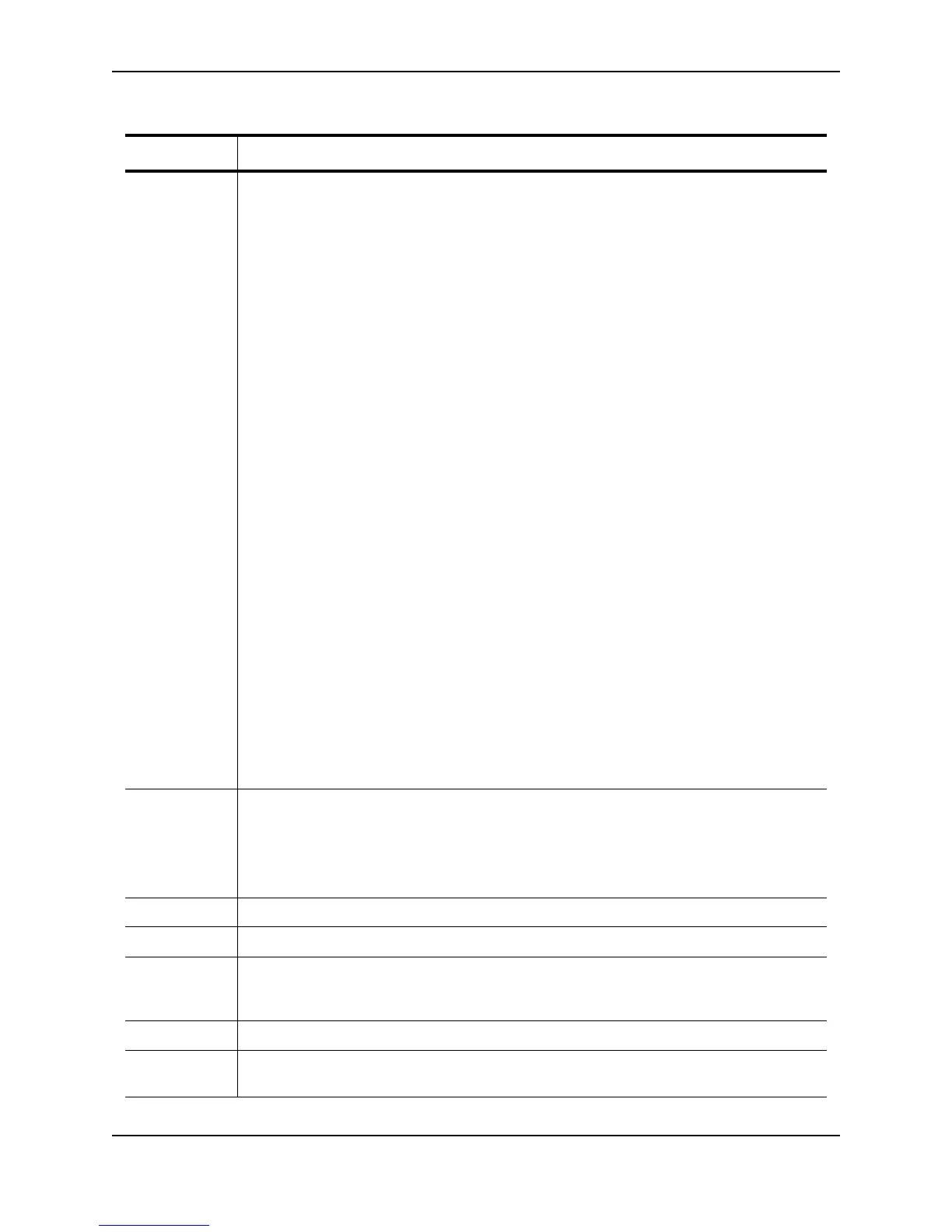Configuring OSPF
December 2005 © Foundry Networks, Inc. 20 - 41
State The state of the conversation between the Layer 3 Switch and the neighbor. This field can
have one of the following values:
• Down – The initial state of a neighbor conversation. This value indicates that there has
been no recent information received from the neighbor.
• Attempt – This state is only valid for neighbors attached to non-broadcast networks. It
indicates that no recent information has been received from the neighbor.
• Init – A Hello packet has recently been seen from the neighbor. However, bidirectional
communication has not yet been established with the neighbor. (The router itself did not
appear in the neighbor's Hello packet.) All neighbors in this state (or higher) are listed in
the Hello packets sent from the associated interface.
• 2-Way – Communication between the two routers is bidirectional. This is the most
advanced state before beginning adjacency establishment. The Designated Router and
Backup Designated Router are selected from the set of neighbors in the 2-Way state or
greater.
• ExStart – The first step in creating an adjacency between the two neighboring routers.
The goal of this step is to decide which router is the master, and to decide upon the initial
Database Description (DD) sequence number. Neighbor conversations in this state or
greater are called adjacencies.
• Exchange – The router is describing its entire link state database by sending Database
Description packets to the neighbor. Each Database Description packet has a DD
sequence number, and is explicitly acknowledged. Only one Database Description
packet can be outstanding at any time. In this state, Link State Request packets can
also be sent asking for the neighbor's more recent advertisements. All adjacencies in
Exchange state or greater are used by the flooding procedure. In fact, these
adjacencies are fully capable of transmitting and receiving all types of OSPF routing
protocol packets.
• Loading – Link State Request packets are sent to the neighbor asking for the more
recent advertisements that have been discovered (but not yet received) in the Exchange
state.
• Full – The neighboring routers are fully adjacent. These adjacencies will now appear in
router links and network link advertisements.
Neigh Address The IP address of the neighbor.
For point-to-point links, the value is as follows:
•If the Pri field is "1", this value is the IP address of the neighbor router’s interface.
•If the Pri field is "3", this is the subnet IP address of the neighbor router’s interface.
Neigh ID The neighbor router’s ID.
Ev The number of times the neighbor’s state changed.
Opt The sum of the option bits in the Options field of the Hello packet. This information is used
by Foundry technical support. See Section A.2 in RFC 2178 for information about the
Options field in Hello packets.
Cnt The number of LSAs that were retransmitted.
Second-to-
dead
The amount of time the Foundry device will wait for a HELLO message from each OSPF
neighbor before assuming the neighbor is dead.
Table 20.3: CLI Display of OSPF Neighbor Information (Continued)
Field Description
